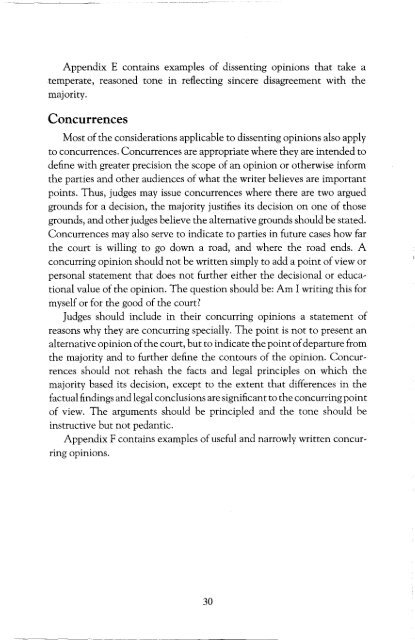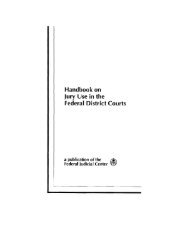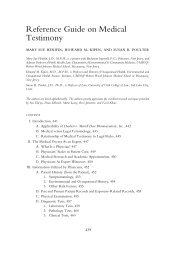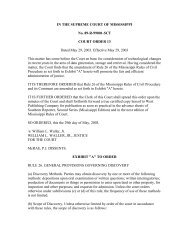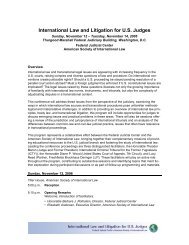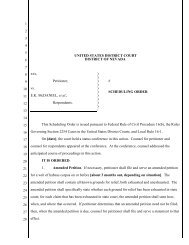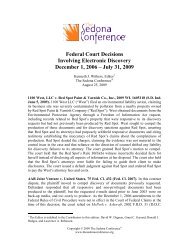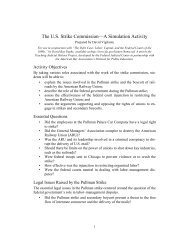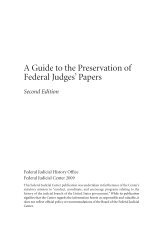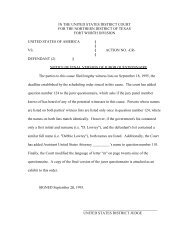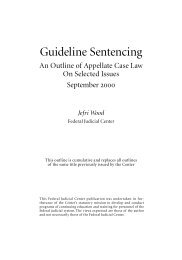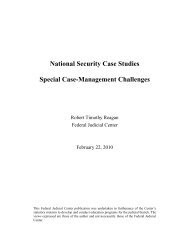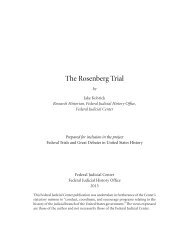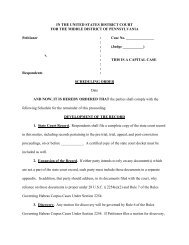Judicial Writing Manual - Federal Judicial Center
Judicial Writing Manual - Federal Judicial Center
Judicial Writing Manual - Federal Judicial Center
Create successful ePaper yourself
Turn your PDF publications into a flip-book with our unique Google optimized e-Paper software.
Appendix E contains examples of dissenting opinions that take a<br />
temperate, reasoned tone in reflecting sincere disagreement with the<br />
majority.<br />
Concurrences<br />
Most of the considerations applicable to dissenting opinions also apply<br />
to concurrences. Concurrences are appropriate where they are intended to<br />
define with greater precision the scope of an opinion or otherwise inform<br />
the parties and other audiences of what the writer believes are important<br />
points. Thus, judges may issue concurrences where there are two argued<br />
grounds for a decision, the majority justifies its decision on one of those<br />
grounds, and other judges believe the alternative grounds should be stated.<br />
Concurrences may also serve to indicate to parties in future cases how far<br />
the court is willing to go down a road, and where the road ends. A<br />
concurring opinion should not be written simply to add a point of view or<br />
personal statement that does not further either the decisional or educational<br />
value of the opinion. The question should be: Am I writing this for<br />
myself or for the good of the court?<br />
Judges should include in their concurring opinions a statement of<br />
reasons why they are concurring specially. The point is not to present an<br />
alternative opinion of the court, but to indicate the point of departure from<br />
the majority and to further define the contours of the opinion. Concurrences<br />
should not rehash the facts and legal principles on which the<br />
majority based its decision, except to the extent that differences in the<br />
factual findings and legal conclusions are significant to the concurring point<br />
of view. The arguments should be principled and the tone should be<br />
instructive but not pedantic.<br />
Appendix F contains examples of useful and narrowly written concurring<br />
opinions.<br />
30


